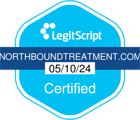The National Institute on Drug Abuse estimates that 130 people die every day from opioid overdose. That translates into roughly 48,000 Americans each year.
Chances are, you or someone you know is currently struggling with opioid abuse. It’s not too late to get the help you need to fight this addiction.
Learn the opioid addiction signs so that you can avoid being another statistic.
What is an Opioid?
Opiates, also known as opioid painkillers, are prescription drugs that are prescribed by a doctor to treat pain. Opiates, opioids and narcotics are common terms loosely used to describe the same group of medicines.
The most common and easily accessible forms of these painkillers include:
- Codeine
- Hydrocodone (Vicodin, Hycodan)
- Morphine (MS Contin, Kadian)
- Oxycodone (Oxycontin, Percoset)
- Hydromorphone (Dilaudid)
- Fentanyl (Duragesic)
When taken as directed, these painkillers are effective at reducing pain. It is common to be prescribed an opioid painkiller following surgery or to treat chronic pain.
Opioids have been over-prescribed for decades by doctors who were unaware of the highly addictive nature of opioids. As more information has become available and the opioid crisis has grown, medical professionals have had to change their treatment plans for common ailments to avoid over-prescribing opioids.
Why Are Opioids Habit-Forming?
Opioids activate the pleasure center of your brain. It feels good to take an opioid. This is why they are a highly effective form of pain management.
They provide a calming effect on the patient. This effect can be psychologically habit-forming for people who crave a step-back from normal life.
Opioids are also physically habit-forming. For people who experience physical pain, taking an opioid reduces that discomfort. Over time many people develop tolerance, meaning they need more of the same substance to get the same effect.
This leads to ever-increasing consumption of opioids to achieve the same pain-free status.
What Are the Side Effects of Opioid Use?
Some common side effects of opioid use include:
- Drowsiness
- Nausea
- Vomiting
- Itching
- Confusion.
- Slow heart rate
- Decreased respiratory rate
When being used to treat chronic pain, there are additional side-effects that patients need to be aware of. Longer-term effects include:
- Growing tolerance
- Increased risk of overdose
- Withdrawal upon stopping use
- Sleep apnea
- Sexual dysfunction
- Perforated nasal septum from snorting
Opioid Addiction Signs: When Does Drug Use Become Drug Abuse?
Not all use of opioids results in an addiction. In some cases, the short term use of a painkiller, as prescribed and monitored by a doctor, is the only option and can treat pain without risk of addiction.
Other cases, especially those including people who are prone to addiction or must take the drug long-term to treat a chronic ailment, are high-risk situations. It’s very likely that drug use will start to become an issue.
There are some common signs and symptoms that drug use is sliding into drug abuse.
Changes in Use
If you notice any of these changes to how you use opioids, you may have formed an addiction and should seek addiction treatment:
- You are taking higher doses than directed
- You are taking doses more frequently than directed
- You are taking the pills via unintended routes of administration, such as snorting a crushed pill or dissolving the crushed pill into a solution for injection
Changes in Behavior
It is more difficult to know if someone we love is struggling with an addiction because we often aren’t privy to changes in use. If you are worried about a loved one abusing opioid use, or are worried you’re abusing opioids, look for these changes in behavior that may indicate an addiction.
You or your loved one may be:
- Avoiding family and friends
- Losing interest in normal activities, such as sports practices or group meetings
- Letting personal hygiene or tidiness slide
- Feeling tired, cranky, nervous or sad
- Eating more or less than normal
- Being erratic in speech and moods
- Sleeping at odd hours
- Missing important appointments
- Attending work or school on an erratic schedule
- Experiencing financial hardship
Ready for an Honest Self Assessment?
If you think you may be dealing with addiction, please be honest with yourself about your drug use. Ask yourself these questions to gauge whether or not you are struggling with addiction to opioids:
- Has your use of opioids increased since you started using opioids?
- Do you experience withdrawal symptoms when you stop using?
- Do you feel that you need to use more than you would like to use, or more than is prescribed?
- Have you experienced negative consequences in your life as a result of your drug use?
- Have you put off doing things because of your drug use?
- Do you find yourself thinking obsessively about getting or using opioids?
- Have you made unsuccessful attempts at cutting back on your drug use?
If you answered yes to any of these questions, you may need to seek help to recover from your drug abuse and addiction.
What is the Treatment for Opioid Addiction?
Quitting opioids cold turkey can have serious negative effects, both physically and mentally. Withdrawal symptoms are brutal and place you at an increased risk of relapse. You also risk transitioning to use of another drug as you quit painkillers.
One study found that opioid users were 19 times more likely to start using heroin than a person who had never used opioids.
The safest and most effective way to quit any addiction is under the supervision of a trained professional. Going through a medically supervised detox program is your best bet.
Once you have successfully completed detox, meaning that there are no more opioids in your system, you need to commit to a rehabilitation program that is designed to treat addiction. Some options for rehabilitation include:
- Inpatient treatment
- Outpatient treatment
- Individual therapy
- Group counseling
- 12-step programs
Let Us Help You
Recognizing opioid addiction signs early means getting the help you need right now. Untreated, opioid addiction can quickly spiral out of control.
Don’t be another statistic.
Contact us today to take the first step toward recovery. Let us help you achieve and maintain recovery.











